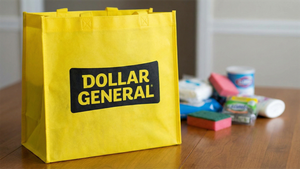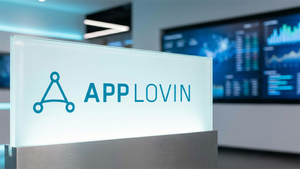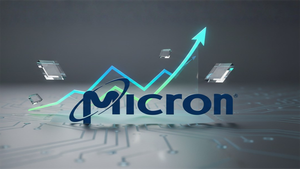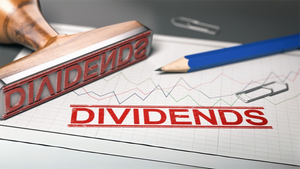
Industrial conglomerate Honeywell (NASDAQ: HON) reported Q2 CY2025 results beating Wall Street’s revenue expectations, with sales up 8.1% year on year to $10.35 billion. The company’s full-year revenue guidance of $40.8 billion at the midpoint came in 1.2% above analysts’ estimates. Its non-GAAP profit of $2.75 per share was 3.5% above analysts’ consensus estimates.
Is now the time to buy HON? Find out in our full research report (it’s free).
Honeywell (HON) Q2 CY2025 Highlights:
- Revenue: $10.35 billion vs analyst estimates of $10.07 billion (8.1% year-on-year growth, 2.8% beat)
- Adjusted EPS: $2.75 vs analyst estimates of $2.66 (3.5% beat)
- Adjusted EBITDA: $2.69 billion vs analyst estimates of $2.55 billion (25.9% margin, 5.4% beat)
- The company lifted its revenue guidance for the full year to $40.8 billion at the midpoint from $40.05 billion, a 1.9% increase
- Management slightly raised its full-year Adjusted EPS guidance to $10.45 at the midpoint
- Operating Margin: 21.3%, down from 23.2% in the same quarter last year
- Organic Revenue rose 5% year on year, in line with the same quarter last year
- Market Capitalization: $144.3 billion
StockStory’s Take
Honeywell’s second quarter results came in above Wall Street’s revenue and profit expectations, but the market responded negatively, focusing on margin compression and underlying operational challenges. Management highlighted that strong organic sales in Defense and Space, as well as Building Automation, were partially offset by cost inflation and higher research and development spending. CEO Vimal Kapur pointed to “accelerated R&D spend” and near-term inventory headwinds, while CFO Mike Stepniak noted that “tariff-related cost inflation pushed up inventory levels.” The company acknowledged that higher investment in future growth weighed on current margins.
Looking ahead, Honeywell’s updated full-year guidance is supported by anticipated gains from recent acquisitions, portfolio restructuring, and continued strength in aerospace and building automation. Management emphasized the potential of new product introductions and the upcoming separation into three independent businesses as catalysts for future growth. Kapur stated, “We are raising our organic sales growth and adjusted earnings per share guide for the year,” but cautioned that macroeconomic uncertainties and “escalation of global tariff rates” remain key risks. The company aims to offset these headwinds through productivity, pricing actions, and targeted capital deployment.
Key Insights from Management’s Remarks
Management attributed the quarter’s performance to robust growth in select segments, increased R&D investment, and strategic portfolio moves, while noting near-term cost pressures and upcoming business separations.
- Aerospace momentum and challenges: Strong order growth in Defense and Space, as well as sustained demand in Commercial Aftermarket, drove aerospace revenue. However, margin contraction was attributed to acquisition-related costs and higher input prices, with management calling recent margin levels “transitionary” due to temporary destocking and ramped-up R&D spend.
- Building Automation turnaround: Building Automation outperformed expectations, helped by new product introductions and focused growth in sectors like hospitals, hotels, data centers, and airports. Management credited elevated R&D and a strategic shift toward higher-growth markets for the segment’s improved trajectory.
- Portfolio transformation underway: The company entered the final phase of a multi-year portfolio review, announcing plans to pursue strategic alternatives for its productivity solutions and warehouse automation businesses. Management said these moves are intended to create “pure-play” business units and maximize value ahead of planned separations.
- Acquisitions and divestitures: Honeywell closed the Sundyne acquisition and agreed to purchase Johnson Matthey’s Catalyst Technologies business, expanding its presence in sustainable fuels and chemicals. The recent sale of its PPE business is expected to be accretive to future growth and margins.
- Cost inflation and tariffs: Tariff-related cost inflation was a headwind across several segments, particularly Aerospace. Management stated that while pricing initiatives are helping to offset some of these pressures, there is a lag in passing costs through to customers, especially for long-term contracts.
Drivers of Future Performance
Honeywell’s outlook is shaped by ongoing portfolio changes, cost management initiatives, and the pursuit of organic growth in targeted markets, balanced against headwinds from tariffs and delayed customer projects.
- Portfolio separation and restructuring: The planned spin-offs of Advanced Materials and Aerospace, along with divestitures in productivity and warehouse solutions, are expected to streamline the company and unlock growth. Management believes these actions will create more agile, focused businesses with tailored capital allocation strategies.
- Acquisition integration and new products: The integration of Sundyne and expansion into catalyst technologies are projected to enhance margins and sales, particularly in Energy and Sustainability Solutions. Management also highlighted the importance of accelerating new product development, especially in Building Automation and Aerospace, to drive organic growth.
- Tariff and macroeconomic risks: Honeywell identified global tariff escalation and uncertain capital spending from energy customers as significant risks for the remainder of the year. While the company expects productivity and pricing actions to mitigate these headwinds, management remains cautious about the timing of large project orders and the potential impact on margins.
Catalysts in Upcoming Quarters
Over the coming quarters, the StockStory team will focus on (1) progress toward the announced separations and clarity on the timing of portfolio divestitures, (2) evidence that recent acquisitions and new product launches are contributing to organic growth in targeted segments, and (3) the effectiveness of Honeywell’s strategies to offset tariff-related cost inflation and margin pressure. Additional updates on energy project timing and the pace of recovery in Aerospace and Building Automation will also be key indicators.
Honeywell currently trades at $226.06, down from $239.48 just before the earnings. Is the company at an inflection point that warrants a buy or sell? See for yourself in our full research report (it’s free).
High Quality Stocks for All Market Conditions
Donald Trump’s April 2024 "Liberation Day" tariffs sent markets into a tailspin, but stocks have since rebounded strongly, proving that knee-jerk reactions often create the best buying opportunities.
The smart money is already positioning for the next leg up. Don’t miss out on the recovery - check out our Top 6 Stocks for this week. This is a curated list of our High Quality stocks that have generated a market-beating return of 183% over the last five years (as of March 31st 2025).
Stocks that made our list in 2020 include now familiar names such as Nvidia (+1,545% between March 2020 and March 2025) as well as under-the-radar businesses like the once-small-cap company Comfort Systems (+782% five-year return). Find your next big winner with StockStory today.
StockStory is growing and hiring equity analyst and marketing roles. Are you a 0 to 1 builder passionate about the markets and AI? See the open roles here.





